Autism and Parkinson's

Exploring the Biological and Clinical Connections
Recent research has illuminated potential links between autism spectrum disorder (ASD) and Parkinson's disease (PD), two seemingly distinct neurological conditions. While ASD is primarily a neurodevelopmental disorder characterized by social, communication, and behavioral challenges, PD is a progressive neurodegenerative disease mainly affecting motor functions. Emerging studies suggest that these conditions may share common biological mechanisms, genetic factors, and brain circuit disruptions, opening new avenues for diagnosis, management, and treatment.
Dopamine’s Central Role in Autism and Parkinson’s Disease
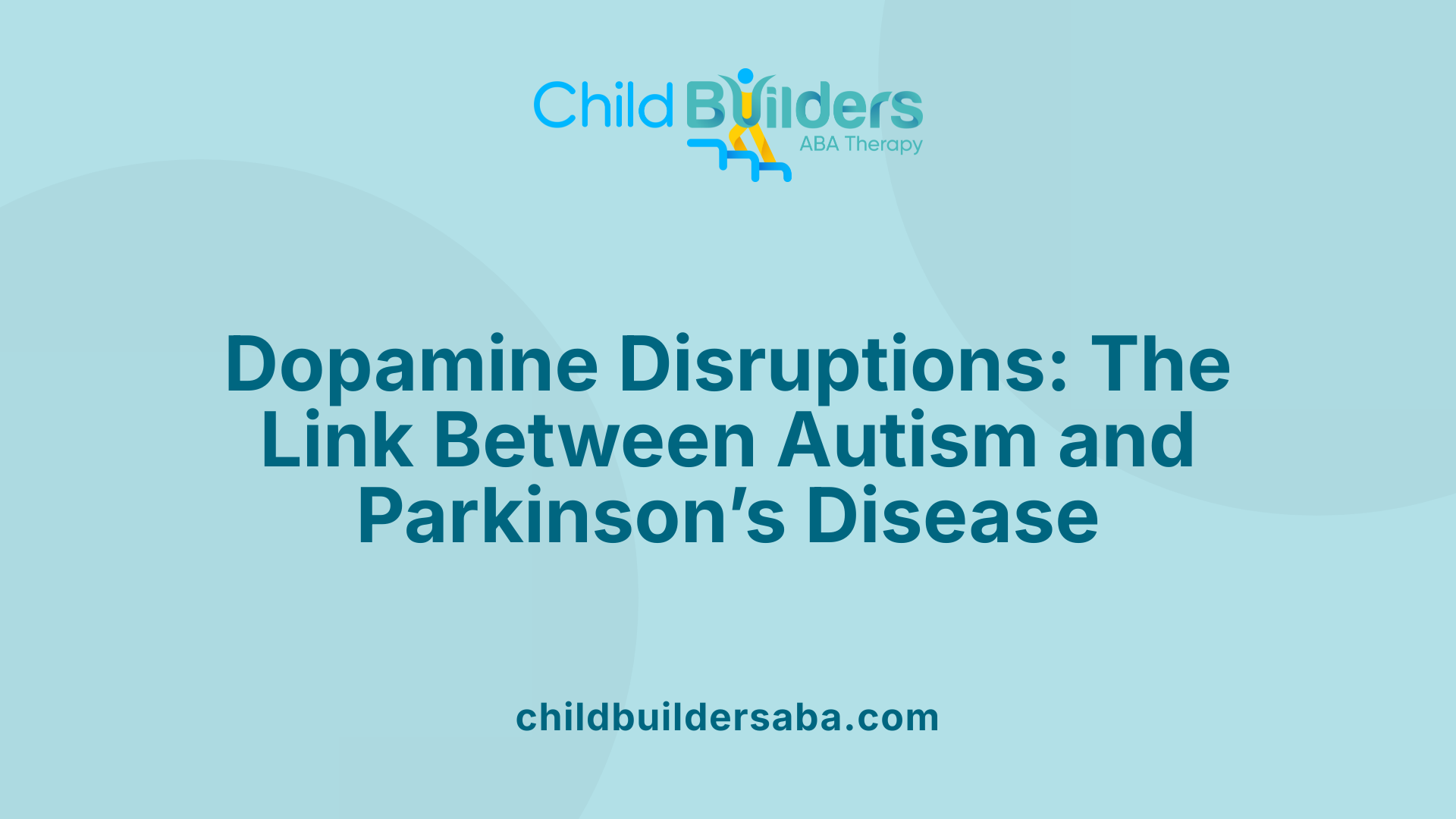
Does autism affect dopamine levels or brain circuits involved in motor and behavioral regulation?
Autism spectrum disorder (ASD) impacts dopamine systems and related brain circuits that manage movement and behavior. Research suggests that in autism, there are alterations in dopamine neurotransmission, which can influence both motor skills and social behaviors.
Studies on animal models with genetic mutations associated with autism show reduced dopamine release. These models reveal disrupted communication between dopamine and acetylcholine within the basal ganglia, a crucial brain area involved in controlling movement and behavior. Such disruptions are linked to behavioral inflexibility and motor difficulties often seen in individuals with autism.
Large population-based research further supports this connection. Data shows that people with autism have a significantly increased risk of developing early-onset Parkinson’s disease (PD). PD is primarily a disorder of dopamine depletion, indicating shared underlying neurobiological mechanisms.
Overall, evidence points to autism involving changes in dopamine levels and in the functioning of brain circuits responsible for regulating movement and social behaviors. This overlap in neurochemical pathways underscores the importance of understanding dopamine’s role for both conditions.
Genetic Overlaps and Shared Pathways
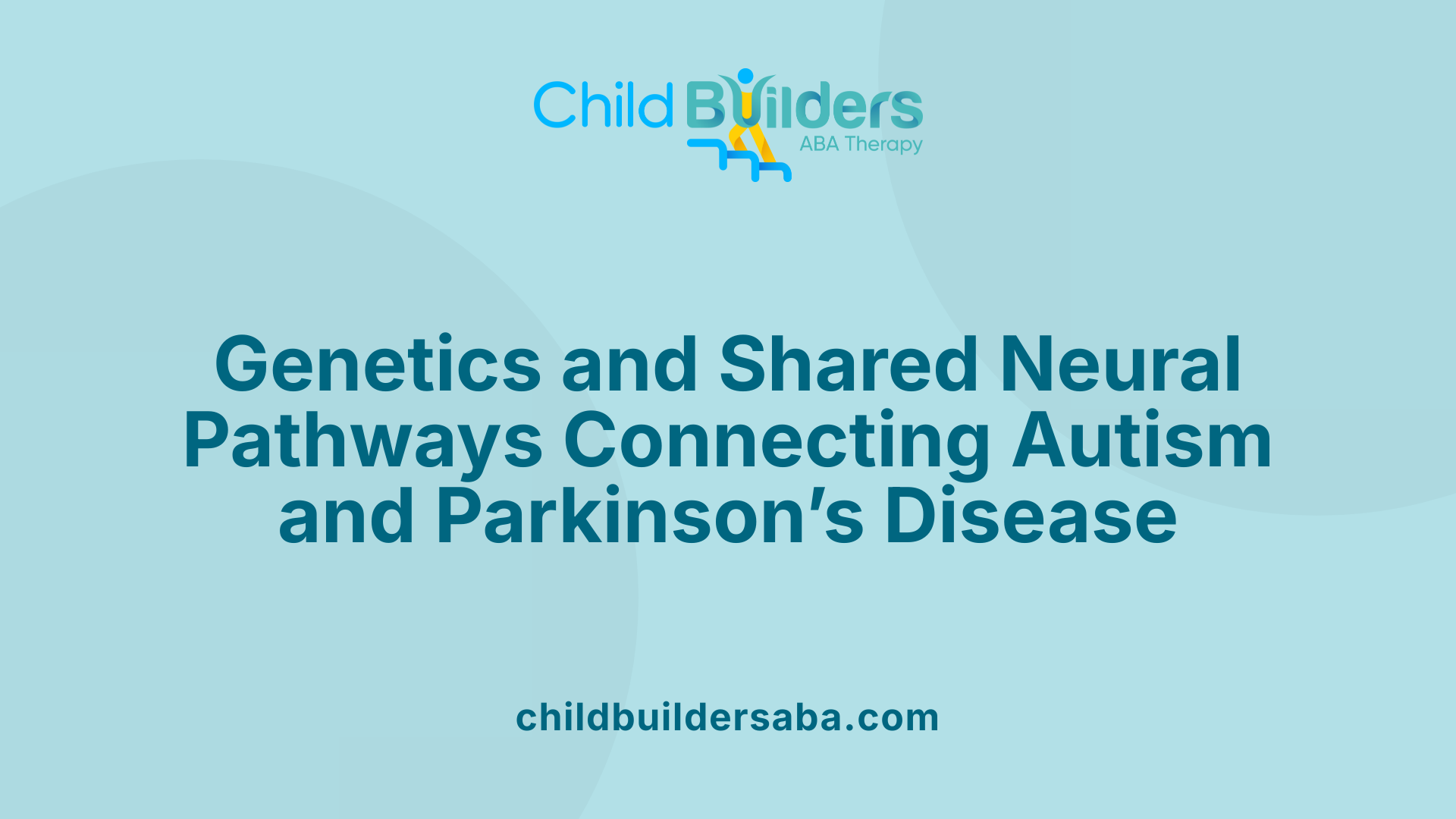
Are Parkinson's disease and autism spectrum disorders related?
Recent research highlights intriguing links between autism spectrum disorder (ASD) and Parkinson’s disease (PD). Studies, including large-scale registry analyses from Sweden and the United States, reveal that individuals with ASD face a significantly increased risk of developing PD, especially early in life. For instance, one Swedish cohort study found that those with ASD are over four times more likely to develop Parkinson’s, even after accounting for confounding factors like medication use, depression, and family history.
These findings suggest a potential common biological underpinning, raising the possibility that ASD may share some neurodegenerative pathways with PD. Furthermore, individuals with Parkinson’s also show a higher incidence of autism-like symptoms, reinforcing the possibility of overlapping neurobiological mechanisms.
What are the potential shared biological mechanisms between autism and Parkinson's disease?
The connection between ASD and PD may be rooted in their impact on the brain’s dopamine system. Both conditions involve dysregulation of dopaminergic neurons, which are essential for movement and social behavior.
Genetic factors play a substantial role. Mutations in genes such as PARK2, RIT2, and DRD2 have been linked to both disorders. Notably, PARK2 mutations, associated with early-onset PD, are also implicated in the development of ASD. These genetic variations can lead to defective mitophagy—the process that clears damaged mitochondria—resulting in neuronal damage.
Neuroinflammation is another common feature. Elevated inflammatory markers and disrupted neural circuitry are observed in both autism and Parkinson’s, possibly contributing to their progression. Structural changes in brain regions involved in motor control and social functioning, particularly the basal ganglia, further support shared pathways.
In summary, shared genetic mutations, especially those affecting mitochondrial function and dopamine regulation, along with neuroinflammatory processes, form the basis for the biological links between autism and Parkinson’s disease. Ongoing research continues to unravel these complex mechanisms, offering hope for targeted therapies in the future.
Clinical Features, Prevalence, and Diagnostic Considerations
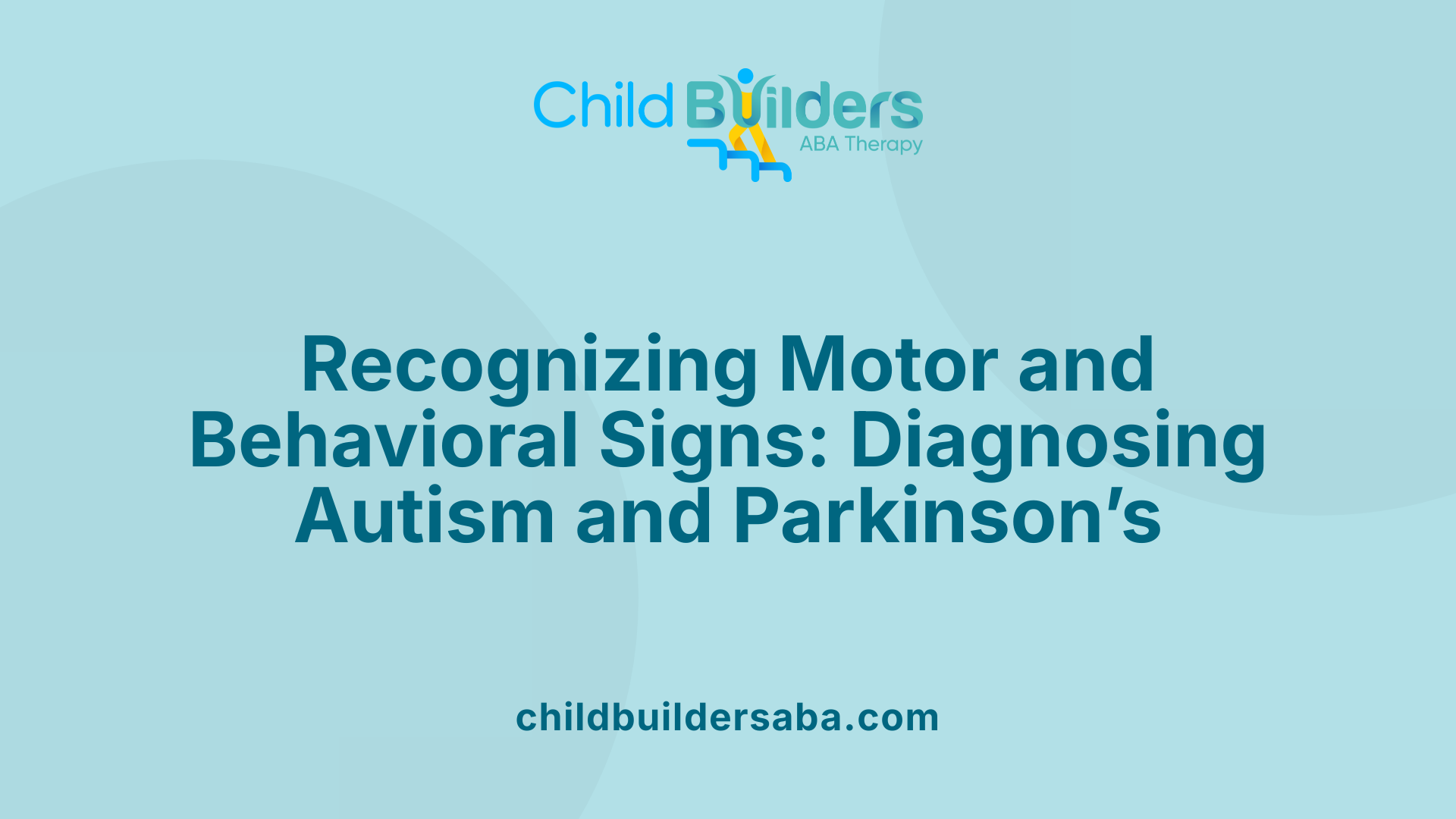
What are the clinical features, prevalence, and diagnostic considerations related to autism and Parkinson's?
People with autism often display motor symptoms that resemble Parkinsonian features, such as tremors, muscle rigidity, slow movements (bradykinesia), and episodes of gait freezing. These symptoms can become more apparent as individuals age, especially over 39 years old. In fact, some studies report that as many as 20% of older adults with ASD exhibit signs of parkinsonism.
The prevalence of parkinsonism in individuals with autism is notably higher than in the general population. On average, the rate of Parkinson’s disease (PD) is about four times greater in those with ASD. For early-onset Parkinson’s, diagnosed before age 50, this risk skyrockets to 4.4 times higher compared to those without autism.
Early identification of these motor and behavioral symptoms is essential for proper diagnosis. Overlapping clinical features can sometimes lead to misdiagnosis or delayed detection of neurodegenerative processes. Recognizing Parkinsonian signs in autistic individuals, particularly in adulthood, warrants careful neurological evaluation.
Diagnostic considerations include distinguishing primary neurodegenerative disease from medication-induced symptoms. While some cases of parkinsonism may result from antipsychotic drug use, evidence suggests that a subset of motor symptoms in ASD individuals are direct manifestations of shared neurobiological mechanisms, like disruptions in dopamine pathways. Therefore, clinicians should monitor motor function over time, considering both neurodevelopmental and neurodegenerative aspects, to guide appropriate management.
Shared Risk Factors: Inflammation and Environmental Influences
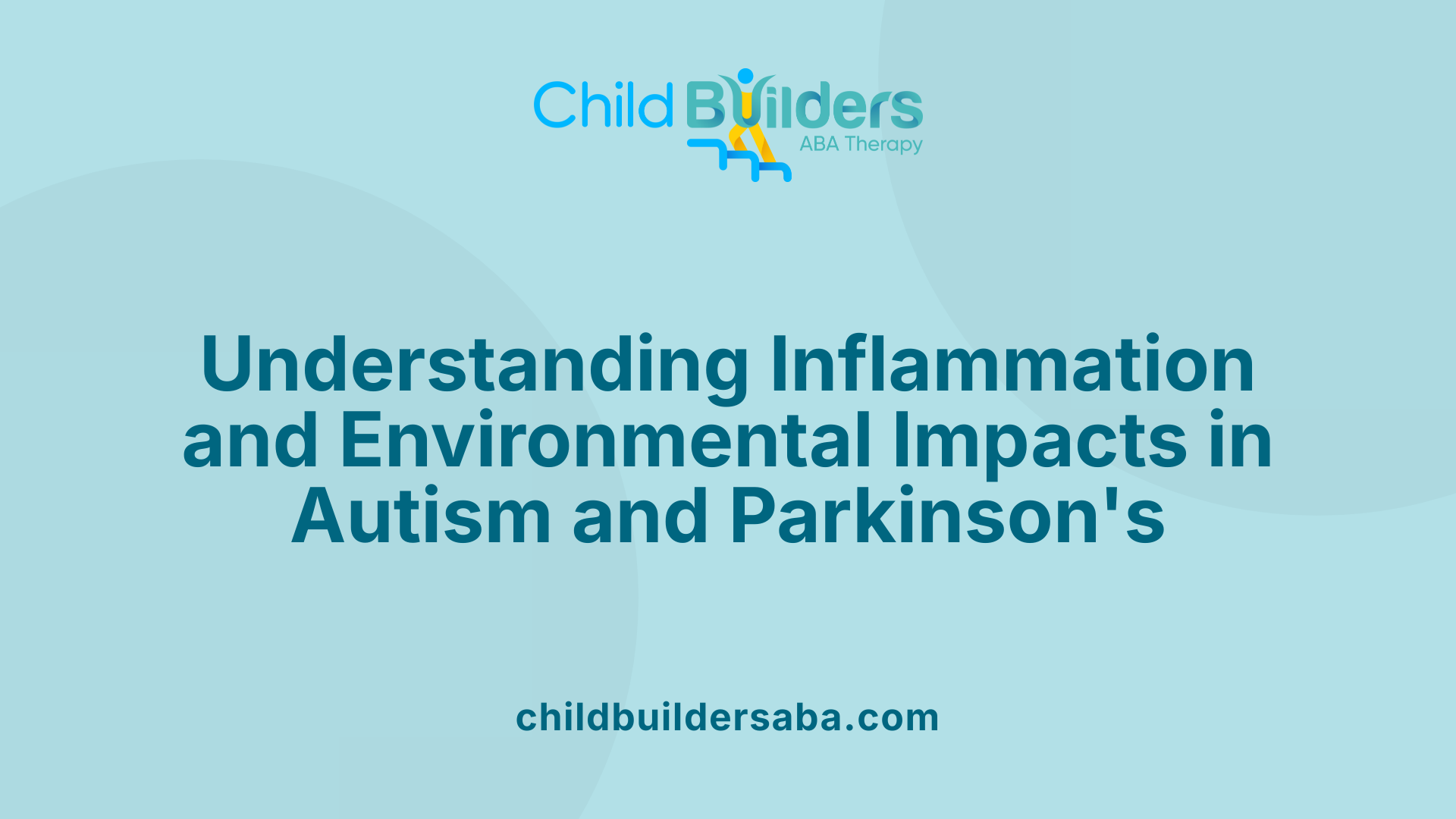
What implications does the possible link between autism and Parkinson's have for diagnosis and treatment?
Recent research points to a biological connection between Autism Spectrum Disorder (ASD) and Parkinson’s disease (PD), particularly involving shared disruptions in the brain’s dopamine system. Genetic variants such as mutations in the PARK2 gene are associated with both conditions, indicating common neurobiological pathways.
This connection suggests that clinicians should be vigilant for Parkinsonian features—like tremors, rigidity, or gait freezing—in individuals with autism, especially as they age. Early detection of motor symptoms can lead to more accurate diagnoses of neurodegenerative processes in autistic adults, who may otherwise be misclassified or overlooked.
Understanding this link also has implications for treatment. Knowledge of shared genetic and neurochemical pathways can guide personalized approaches that target the common disruptions, particularly in dopamine regulation. For example, therapies aimed at restoring dopaminergic function might benefit patients with overlapping symptoms of ASD and PD.
Moreover, awareness of long-term medication effects, such as the use of antipsychotics, is crucial, as these drugs influence dopamine levels and could modify disease risk or presentation. Recognizing early motor signs can facilitate timely interventions, possibly slowing disease progression.
In summary, integrating genetic, neurochemical, and clinical data enhances the potential for earlier and more precise diagnosis. It also opens the door to developing targeted therapies that address the underlying shared mechanisms, ultimately improving outcomes for individuals affected by both neurodevelopmental and neurodegenerative disorders.
| Aspect | Considerations | Additional Insights |
|---|---|---|
| Neuroinflammation | Both ASD and PD involve brain inflammation | Managing inflammation through diet or medication may alleviate symptoms |
| Environmental Factors | Exposure to pollutants and lifestyle influences affect both | Reducing exposure and promoting healthy habits could reduce risks |
| Clinical Management | Monitoring motor and cognitive functions over time | Early intervention in motor symptoms may improve quality of life |
This emerging understanding underscores the importance of longitudinal care and the potential for preventative strategies that address shared pathogenic pathways, benefiting individuals across the lifespan.
Inflammation, Diet, and Symptom Management
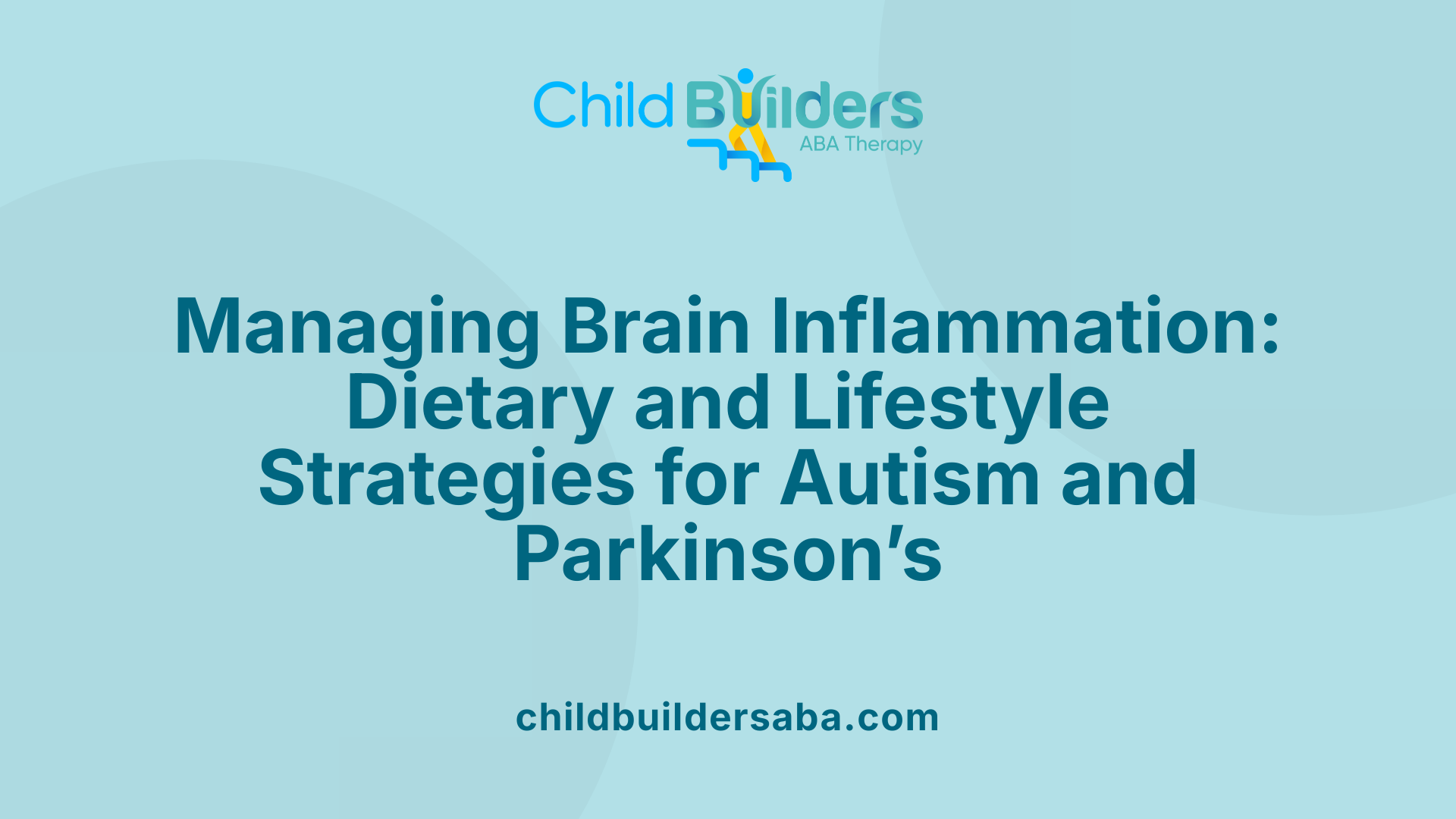
How are brain inflammation in ASD and PD connected?
Both Autism Spectrum Disorder (ASD) and Parkinson’s disease (PD) involve brain inflammation, which can contribute to their pathologies. Inflammatory processes in the brain can disrupt neural communication and damage delicate neural structures. For example, neuroinflammation can affect dopaminergic neurons, which are vital for motor control and social behavior, key features altered in both conditions.
In individuals with ASD, increased brain inflammation has been linked to abnormal immune responses and neurochemical imbalances. Similarly, PD involves neurodegeneration partly driven by inflammation, especially within the basal ganglia, which impacts motor functions. This overlapping inflammatory component suggests that managing brain inflammation could be a therapeutic target for both disorders.
What dietary and lifestyle approaches can help?
Adopting anti-inflammatory diets and healthy lifestyle habits may mitigate some symptoms associated with ASD and PD. Consuming omega-3 fatty acids from fish, nuts, and green leafy vegetables can help reduce inflammation. Additionally, incorporating specific oils and foods rich in antioxidants supports neural health.
Lifestyle interventions like mindfulness, yoga, hypnosis, and neurofeedback are increasingly being explored for their potential to regulate neural activity and decrease neuroinflammation. These approaches aim to improve overall brain function and reduce stress-related neural stressors, which may benefit individuals facing both developmental and neurodegenerative challenges.
What therapeutic strategies are beneficial?
Therapies combining dietary modifications with mind-body practices provide a holistic approach to symptom management. Anti-inflammatory diets focus on nutrient-rich foods that suppress inflammatory responses. Mindfulness and yoga enhance neural regulation and emotional resilience.
Neurofeedback and hypnosis are emerging as methods to directly influence brain activity, potentially normalizing dysregulated circuits affected in ASD and PD. Utilizing these strategies proactively may help improve motor skills, reduce repetitive behaviors, and support mental well-being.
| Approach | Target Area | Benefit |
|---|---|---|
| Anti-inflammatory diet | Brain inflammation | Reduces neuroinflammation, supports neural repair |
| Mindfulness and yoga | Stress and neural regulation | Balances neural activity, enhances mood |
| Neurofeedback | Brain wave regulation | Normalizes neural circuits, improves focus |
| Hypnosis | Neuroplasticity | Potentially lessens symptoms and promotes healing |
This multi-faceted strategy underscores the importance of a comprehensive care plan that addresses inflammation and neural health to potentially alleviate symptoms in both autism and Parkinson’s disease.
Towards Integrated Understanding and Care
As research continues to uncover the genetic, neurochemical, and inflammatory links between autism and Parkinson’s disease, it becomes increasingly important for clinicians to adopt a comprehensive approach. Recognizing shared biological mechanisms not only enhances early diagnosis and personalized treatment but also emphasizes the importance of long-term neurological monitoring in individuals with autism. Continued investigations into these connections promise more effective management strategies and potentially preventative interventions, ultimately improving outcomes for individuals across the lifespan.
References
- Linking autism spectrum disorders and parkinsonism
- Risk of Parkinson Disease in Individuals With Autism Spectrum ...
- Daily briefing: Autism triples risk of Parkinson's-like symptoms - Nature
- Autism linked to elevated risk of Parkinson's disease
- Exploring the common genes involved in autism spectrum disorder ...
- Risk of Parkinson Disease in Individuals With Autism Spectrum ...
- What Do Autism and Parkinson's Have in Common?



.jpg)

































































































